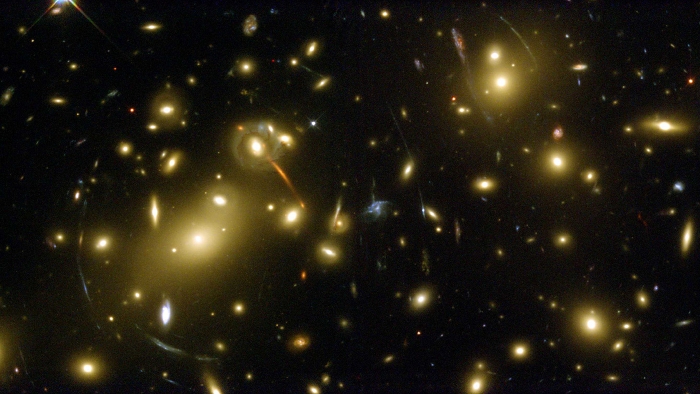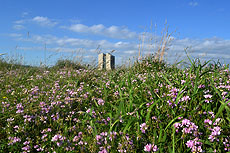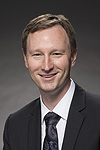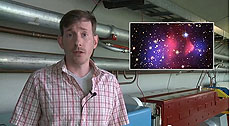|
Tuesday, July 29
Noon
Undergraduate Lecture Series (NOTE LOCATION) - Curia II
Speaker: Amitoj Singh, Fermilab
Title: Computing @ Fermilab
3:30 p.m.
DIRECTOR'S COFFEE BREAK - 2nd Flr X-Over
THERE WILL BE NO ACCELERATOR TECHNOLOGY AND PHYSICS SEMINAR THIS WEEK
Wednesday, July 30
10:30 a.m.
Particle Astrophysics Seminar (NOTE DATE, TIME, LOCATION) - One East
Speaker: Meg Urry, Yale University
Title: The Growth of Supermassive Black Holes and Their Co-Evolution with Galaxies
3:30 p.m.
DIRECTOR'S COFFEE BREAK - 2nd Flr X-Over
4 p.m.
Fermilab Colloquium - One West
Speaker: Meg Urry, Yale University
Title: Women in Physics and Astronomy - Why So Few? And How to Get to Parity
Click here for NALCAL,
a weekly calendar with links to additional information.
Ongoing and upcoming conferences at Fermilab
|
|
Tuesday, July 29
- Breakfast: All-American breakfast
- Breakfast: bacon, egg and cheese bagel
- Grilled reuben sandwich
- Smart cuisine: portobello and peppers over soft polenta
- Beef stroganoff
- Grilled chicken Caesar jazz salad wrap
- Pork carnitas soft tacos
- Split pea with ham soup
- Chef's choice soup
- Assorted pizza by the slice
Wilson Hall Cafe menu
|
|
Wednesday, July 30
Lunch
- Honey ginger grilled salmon
- Coconut rice
- Roasted broccoli
- Tropical cake
Friday, Aug. 1
Dinner
Menu unavailable
Chez Leon menu
Call x3524 to make your reservation.
|
|
How to weigh a galaxy cluster
 |
| The study of galaxy clusters is bringing scientists closer to an understanding of the "dark" universe. Photo courtesy of NASA
|
Step on a scale and you'll get a quick measure of your weight. Weighing galaxy clusters, groups of hundreds or thousands of galaxies bound together by gravity, isn't so easy.
But scientists have many ways to do it. This is fortunate for particle astrophysics; determining the mass of galaxy clusters led to the discovery of dark matter, and it's key to the continuing study of the "dark" universe: dark matter and dark energy.
"Galaxy cluster measurements are one of the most powerful probes of cosmology we have," says Steve Allen, an associate professor of physics at SLAC National Accelerator Laboratory and Stanford University.
When you weigh a galaxy cluster, what you see is not all that you get. Decades ago, when scientists first estimated the masses of galaxy clusters based on the motions of the galaxies within them, they realized that something strange was going on. The galaxies were moving faster than expected, which implied that the clusters were more massive than previously thought, based on the amout of light they emitted. The prevailing explanation today is that galaxy clusters contain vast amounts of dark matter.
Measurements of the masses of galaxy clusters can tell scientists about the sizes and shapes of the dark matter "halos" enveloping them and can help them determine the effects of dark energy, which scientists think is driving the universe's accelerating expansion.
Today, researchers use a combination of simulations and space- and ground-based telescope observations to estimate the total masses of galaxy clusters.
Read more
—Glenn Roberts Jr.
|
Peeking above the flowers
 |
| A field of crown vetch near M8 stretches far and wide behind Wilson Hall. Photo: Patrick Sheahan, AD
|
|
Vinton G. Cerf: "The value of investment by the U.S. government cannot be overstated"
From Scientific American, July 22, 2014
On Thursday, July 17, four science experts served as witnesses at the U.S. Senate Committee on Commerce, Science, and Transportation hearing, "The Federal Research Portfolio: Capitalizing on Investments in R&D." The hearing considered the federal government's role in research and development (R&D), and the nation's STEM education and outreach initiatives.
Attendees in the Capitol hearing room were Mariette DiChristina, editor in chief and senior vice president of Scientific American; Vinton G. Cerf, computer scientist, Google's Internet Evangelist and one of the fathers of the Internet; Neal F. Lane, former director of the White House Office of Science and Technology Policy; and Stephen E. Fienberg, professor of statistics and social science at Carnegie Mellon University.
Recognizing the need for long-term investments in science and technology, Congress passed the America COMPETES Acts of 2007 and 2010 to significantly increase federal R&D budgets, to promote STEM (science, technology, engineering and mathematics) education and to support the innovation necessary for economic growth.
[Linked below] is the full text of the written testimony by Vinton G. Cerf.
Chairman Rockefeller, Ranking Member Thune, Members of the Committee, distinguished panelists and guests, I am honored and pleased to have this opportunity to participate in a hearing on a topic about which I am passionate and committed: basic research. There is no substitute for deep understanding of natural and artificial phenomena, especially when our national and global wellbeing depend on our ability to model and make predictions regarding them. It would be hard to overstate the benefits that have been realized from investment by the US Government and American industry in research.
Read more
|
|
From hosting the Tevatron to hosting neutrino experiments
 |
|
Tim Meyer
|
So if the scientific future of Fermilab is as a host to a global collaboration pursuing the science of neutrinos, what does that mean for the laboratory? Good question!
In my mind, the answer is inside that one word: "host." What does it mean to be a host and what does it mean to be a host for a global collaboration? That is the real question, and that will be the direction of our efforts for the next few years: positioning Fermilab as "one of the top research destinations of choice" for the present and future generations of particle physicists and neutrino scientists.
We've done this before: Fermilab hosted the Tevatron and welcomed the world to participate in designing and building CDF and DZero.
So how do we get started on this collaboration? Well, the previous effort began two decades ago! Just as when your in-laws come to spend the summer with you and your family, the first thing to do is freshen up the space and make sure everything is in working order and that there is room for everyone.
Our Campus Master Plan is the first step in that direction, presenting a vision for how to centralize, consolidate and modernize the lab so that we are ready to be the centerpiece of a global program in accelerator-based neutrino science. The next steps include looking more deeply at what type of experience we want to offer Fermilab's "users of the future" as well as our own scientists and staff and our community neighbors. And we need to consider what key points of agreement and understanding will be necessary to forge global partnerships while also respecting the rules and expectations of our primary stakeholders: the U.S. Department of Energy, Fermi Research Alliance and U.S. taxpayers.
We have the teamwork, the experience and the skills to make this transition, and it won't be a single step. It will consist of many, small, incremental steps as we re-envision, revitalize and refresh Fermilab as one of the world's top destinations for particle physics research.
|
Got a minute? Detecting dark matter
 |
| The kind of matter that makes up you and the chair you are sitting on is made of atoms. This form of matter makes up only 5 percent of the universe. The rest is composed of two other forms called dark matter and dark energy. Andrew Whitbeck tells of plans to try to make dark matter using the Large Hadron Collider. View the video. Video: US CMS
|
|
House passes bill to modernize national laboratories
From Kane County Chronicle, July 23, 2014
The U.S. House of Representatives passed legislation July 22 that was introduced last week by U.S. Rep. Randy Hultgren, R-Winfield, and other representatives.
According to a news release from Hultgren's office, the Department of Energy Laboratory Modernization and Technology Transfer Act of 2014 would bring the United States' national lab system into the 21st century and promote the easy transfer of federal research into the private sector to bring to the marketplace.
The bill would codify the Agreements for Commercializing Technology, a pilot program aimed at facilitating cooperation between companies and national laboratories to develop new technology.
Read more
|
|